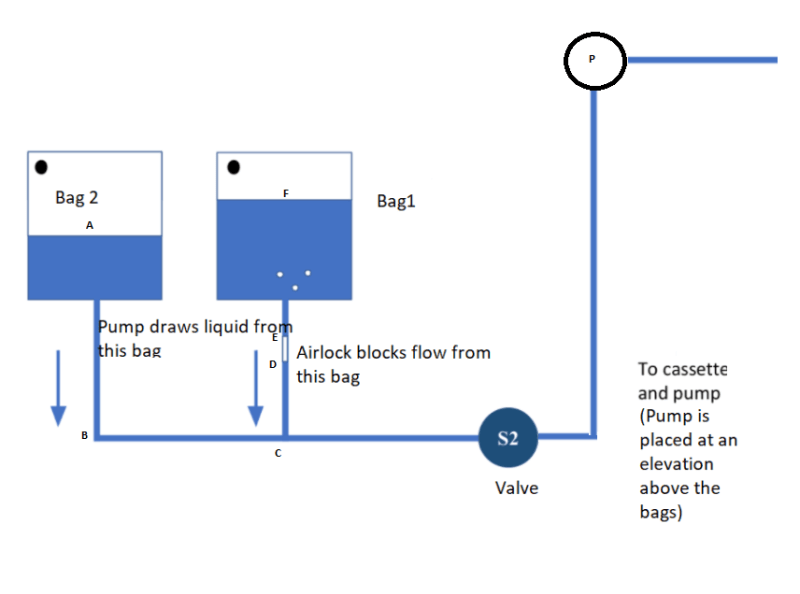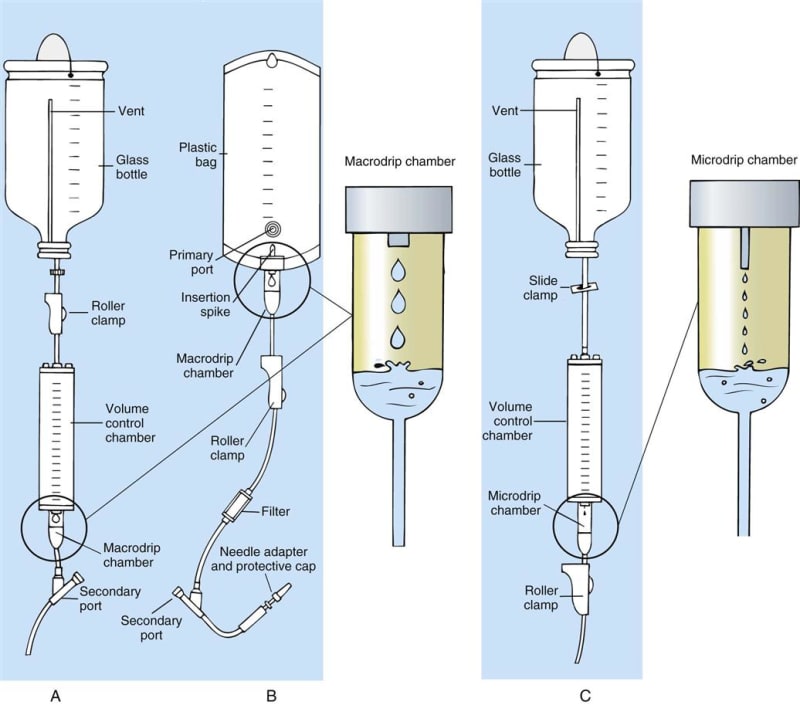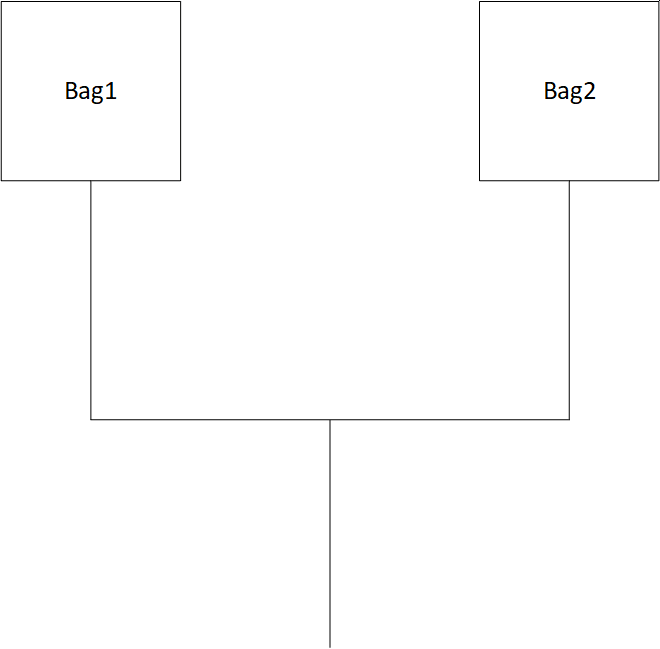aaansari97
Mechanical
Hello all,
I'm working on improving an existing system that consists of 2 water bags hung on an elevation below a peristaltic pump. A single solenoid valve controls the flow through both tubings (Image attached).
1. Upon repeated operations of this arrangement, we observed that an airlock locks flow from one bag (bag 1) and the pumps starts to draw liquid from the other bag only (bag 2). This is opposed to our intention of equally draining the bags.
2. Also, we have observed that as liquid level in bag2 falls (because of fluid flow), the airlock ultimately gets sucked into the pump system and discharged. This is good news but the airlock shouldn't have occurred in the first place.
The issue is that our machine software is built on the assumption that liquid will be drained from the bags approximately equally. Also, with this bag arrangement, we believe the machine's mechanical behaviour has become unreliable since sometimes when the airlock doesn't occur, the bags are indeed drained equally.
We have decided to change the pump suction arrangement entirely to bypass this problem and added an intermediate bag for deaeration purposes. However, my seniors are demanding that I give them a reasonable physical explanation of the issue and its causes before we change the design.
Air coming into the tube is no problem and is an expected occurrence. However, airlocking is an issue and I have not been able to come up with a good explanation. I understand that airlocking reduces the elevation head of water (height of airlock * water density* gravitational acceleration [rho*g*h]) from the airlocked bag at the junction but why can't we simply suck out the problematic airlock?
Any help will be appreciated. Please note that the pump is above the bags and liquid under question is water.
Thanks!

I'm working on improving an existing system that consists of 2 water bags hung on an elevation below a peristaltic pump. A single solenoid valve controls the flow through both tubings (Image attached).
1. Upon repeated operations of this arrangement, we observed that an airlock locks flow from one bag (bag 1) and the pumps starts to draw liquid from the other bag only (bag 2). This is opposed to our intention of equally draining the bags.
2. Also, we have observed that as liquid level in bag2 falls (because of fluid flow), the airlock ultimately gets sucked into the pump system and discharged. This is good news but the airlock shouldn't have occurred in the first place.
The issue is that our machine software is built on the assumption that liquid will be drained from the bags approximately equally. Also, with this bag arrangement, we believe the machine's mechanical behaviour has become unreliable since sometimes when the airlock doesn't occur, the bags are indeed drained equally.
We have decided to change the pump suction arrangement entirely to bypass this problem and added an intermediate bag for deaeration purposes. However, my seniors are demanding that I give them a reasonable physical explanation of the issue and its causes before we change the design.
Air coming into the tube is no problem and is an expected occurrence. However, airlocking is an issue and I have not been able to come up with a good explanation. I understand that airlocking reduces the elevation head of water (height of airlock * water density* gravitational acceleration [rho*g*h]) from the airlocked bag at the junction but why can't we simply suck out the problematic airlock?
Any help will be appreciated. Please note that the pump is above the bags and liquid under question is water.
Thanks!



![[ponder] [ponder] [ponder]](/data/assets/smilies/ponder.gif) I don't know.
I don't know.
